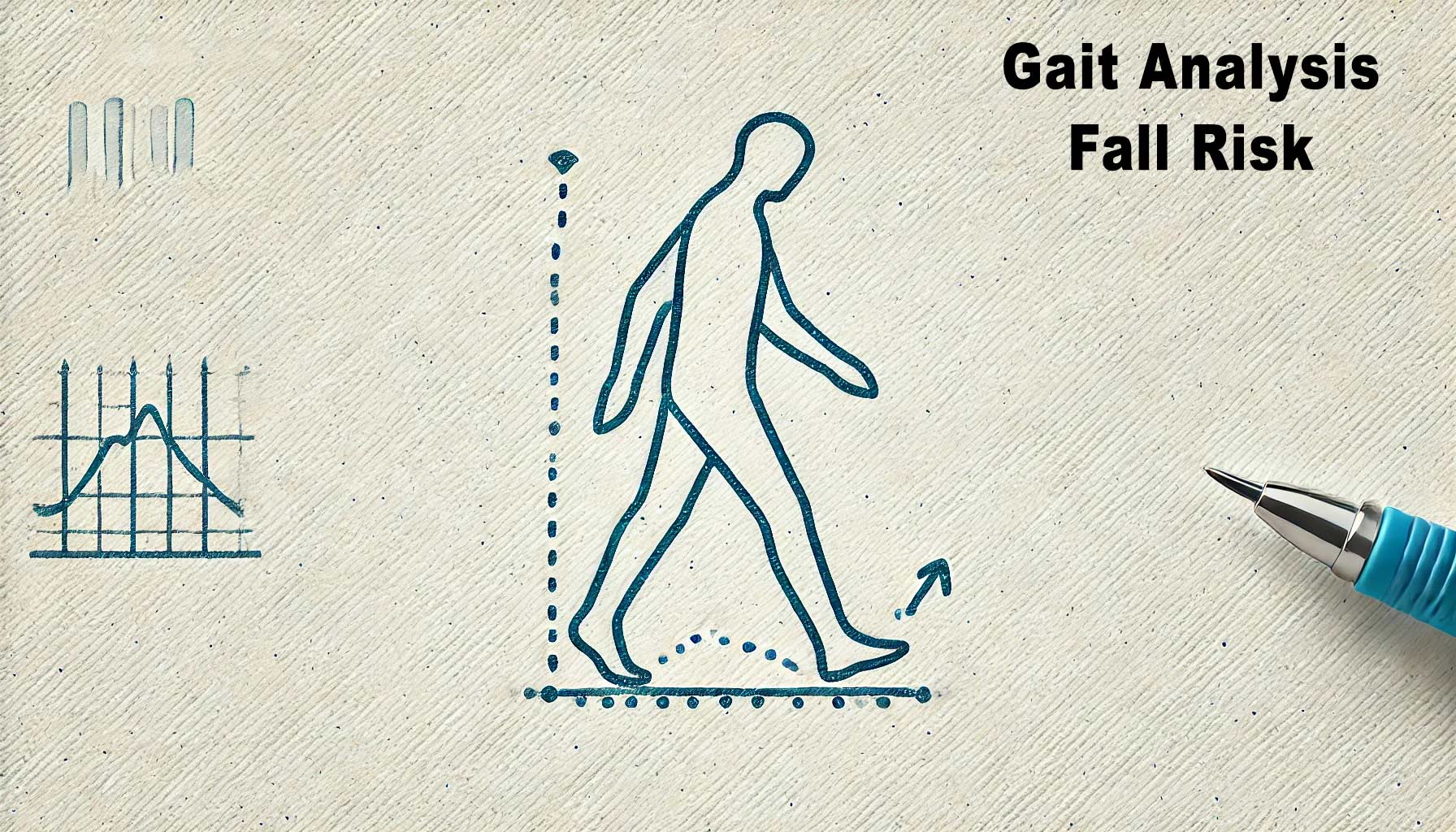Falls are a significant concern for elderly populations, leading to injuries, loss of independence, and increased healthcare costs. One of the most effective ways to predict and prevent falls is through gait analysis, which examines how people walk to identify abnormalities that may increase the risk of falling. Recent advancements in wearable technology and artificial intelligence (AI) are transforming gait analysis, making it more accessible and accurate in real-world settings. This article explores the latest innovations in gait analysis for fall risk assessment and their implications for enhancing fall prevention strategies.
1. The Importance of Gait Analysis in Fall Risk Assessment
Gait analysis plays a crucial role in identifying individuals at risk of falls by examining their walking patterns. Key gait parameters – such as walking speed, stride length, and balance – provide valuable insights into a person’s mobility and stability. When these parameters deviate from normal ranges, it can indicate a higher risk of falling.
Why Gait Matters:
- Walking Speed: Slower walking speeds are often associated with muscle weakness, reduced confidence, and balance issues, all of which increase fall risk.
- Stride Length and Cadence: Shorter strides and irregular step timing can reflect poor coordination or lower limb dysfunction.
- Balance and Stability: Indicators like increased sway or an uneven gait can signal impaired balance, a key predictor of falls.
Traditional Methods:
- In-Lab Assessments: Traditionally, gait analysis has been conducted in controlled environments using pressure-sensitive mats, motion capture systems, or video analysis. While these methods provide detailed data, they are often costly, time-consuming, and limited to short observation periods in clinical settings.
- Limitations: These conventional approaches may not capture the full range of an individual’s gait variability in everyday life, such as walking on different surfaces or under varying conditions. This gap between lab-based assessments and real-world scenarios can reduce the accuracy of fall risk predictions.
By moving gait analysis into real-world environments through wearable technology, it becomes possible to monitor gait continuously and in the context of daily activities, providing a more comprehensive assessment of fall risk.
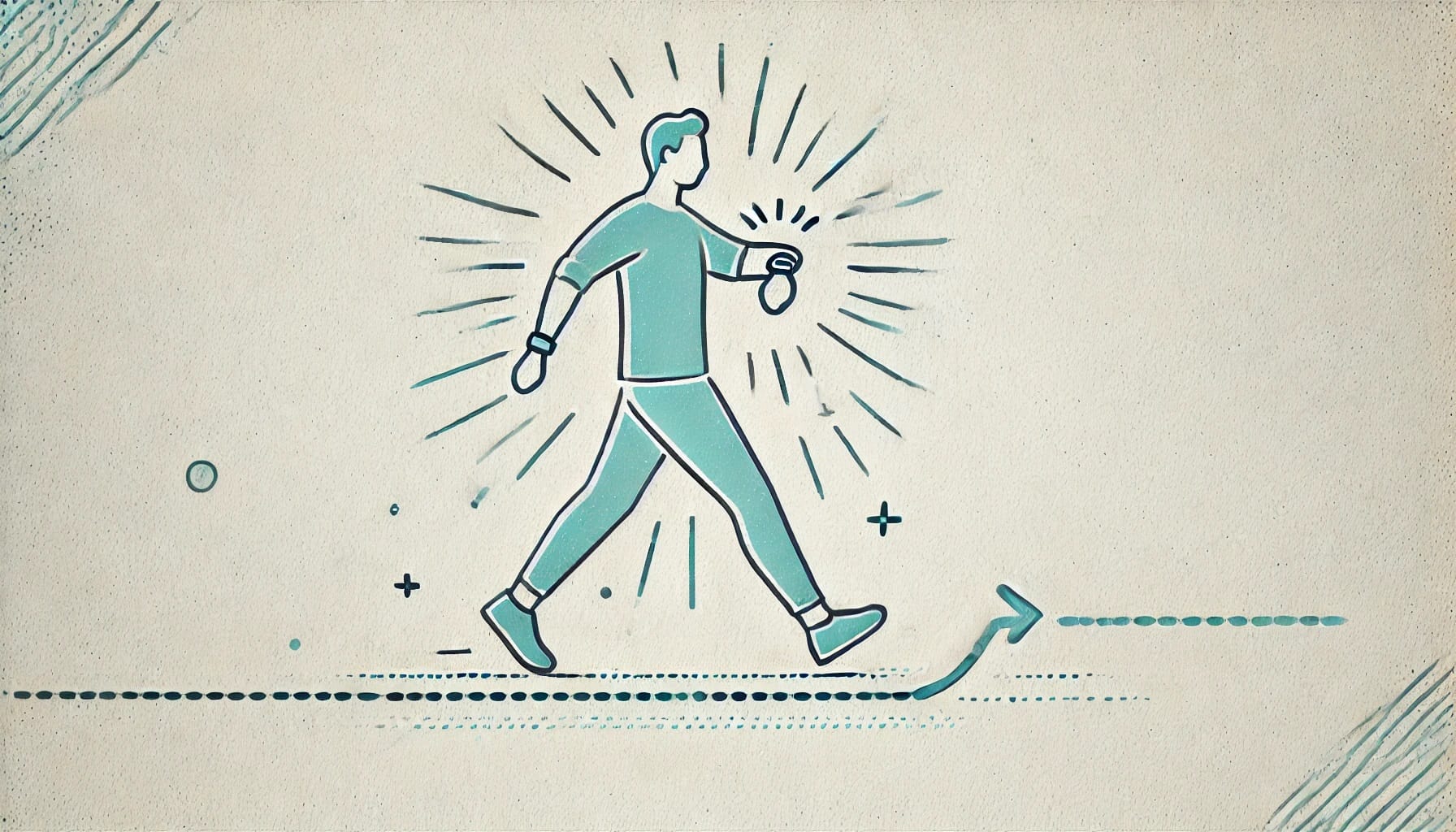
2. Advancements in Wearable Sensor Technology
The evolution of wearable sensors has revolutionized how gait analysis is performed, making it possible to assess fall risk outside of clinical settings. Modern wearable devices are small, lightweight, and capable of capturing detailed data over extended periods, enabling continuous gait monitoring that was previously unattainable.
Key Advancements in Wearable Sensors:
- Miniaturization of Sensors: Advances in sensor technology have led to the development of compact, highly sensitive accelerometers, gyroscopes, and magnetometers that can be discreetly worn on various parts of the body. This miniaturization allows for seamless integration into everyday clothing or accessories without disrupting the wearer’s routine.
- Multi-Signal Integration: Modern wearable devices often incorporate multiple sensors to capture a broad range of data. For example, combining accelerometers with gyroscopes provides comprehensive insights into both linear movements (like steps) and rotational movements (such as turning), enhancing the accuracy of gait analysis.
- Real-Time Data Processing: Wearable devices equipped with on-board processing capabilities can analyze gait data in real time, allowing for immediate feedback and intervention. This is particularly useful in settings like rehabilitation centers, where therapists can adjust treatment plans based on live data.
Example Devices:
- Smart Insoles: These insoles measure pressure distribution and foot dynamics, offering insights into balance and step stability. They are particularly useful for detecting asymmetries in gait that might indicate fall risk.
- Body-Worn Sensors: Devices like thigh-worn accelerometers capture detailed lower limb dynamics, crucial for understanding gait parameters that are directly related to fall risk.
- Wearable Patches: These lightweight patches adhere to the skin and provide continuous monitoring of gait and posture, offering a non-invasive option for long-term gait analysis.
These advancements enable a shift from sporadic, lab-based gait assessments to continuous monitoring in the wearer’s natural environment, providing a richer and more accurate picture of their fall risk. This transition from controlled settings to real-world environments is crucial for developing personalized interventions that can effectively reduce fall risks in everyday life.
The integration of these wearable technologies into gait analysis marks a significant step forward in fall risk assessment, offering new opportunities for researchers, clinicians, and technologists to enhance fall prevention strategies.
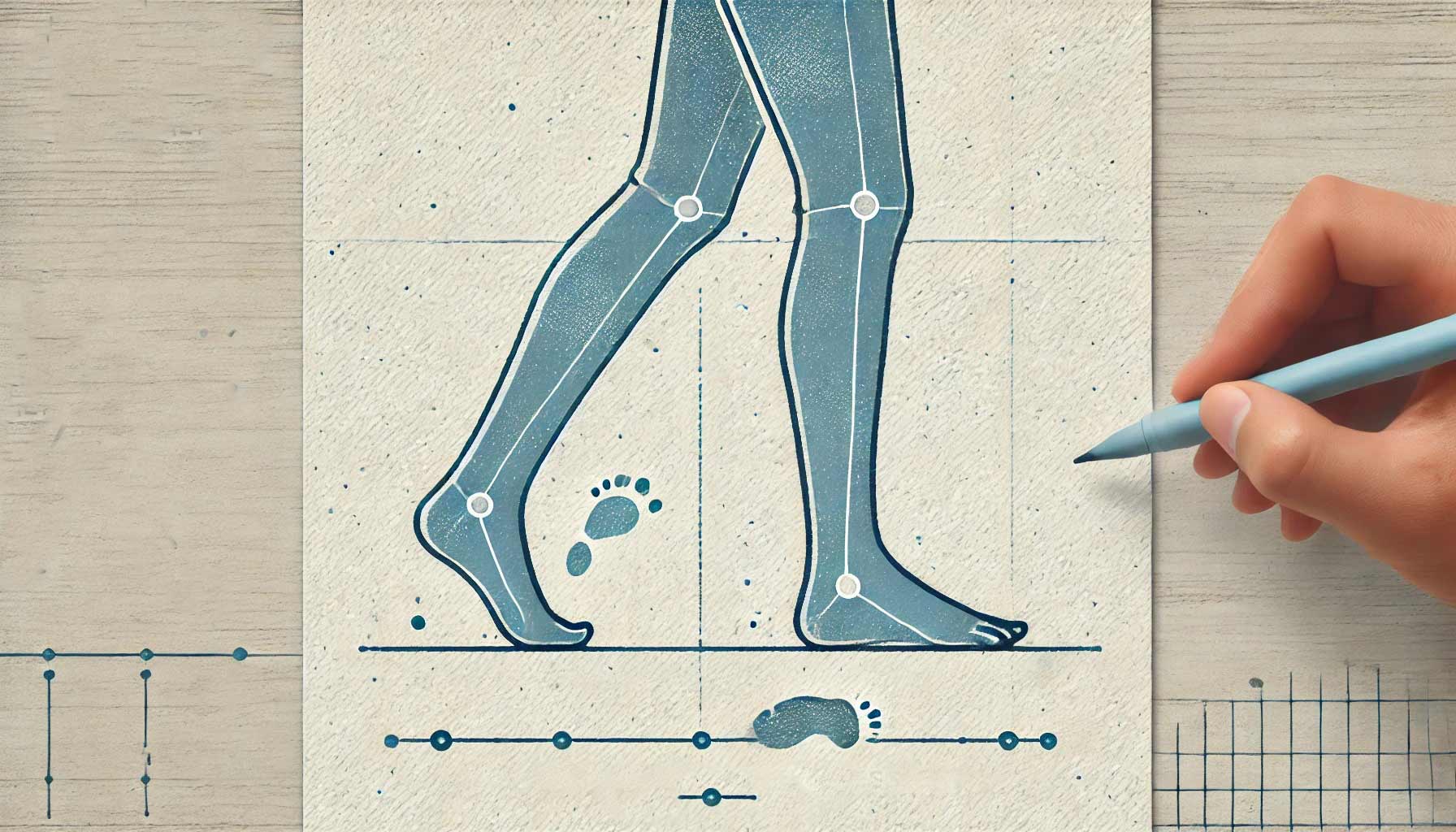
3. AI and Machine Learning in Gait Analysis
Artificial intelligence (AI) and machine learning are at the forefront of innovations in gait analysis, enhancing the ability to predict fall risks with greater accuracy. By processing large volumes of gait data, AI algorithms can identify complex patterns and subtle abnormalities that might be missed by the human eye or traditional analysis methods. These advanced computational techniques not only detect existing gait issues but also predict potential falls before they happen.
AI Algorithms for Gait Analysis:
- Pattern Recognition: AI uses pattern recognition to analyze gait data and identify irregularities. For example, changes in step consistency, stride symmetry, or balance can be flagged as potential indicators of fall risk.
- Predictive Models: Machine learning models are trained on datasets containing millions of gait samples, allowing them to learn the specific gait characteristics associated with high fall risk. These models improve over time, becoming more accurate as they are exposed to more data.
- Adaptive Learning: AI systems can adapt to individual differences, taking into account unique factors such as age, health conditions, and activity levels. This personalized approach enhances the relevance and accuracy of the fall risk assessments.
Practical Applications:
- Real-Time Alerts: AI-driven wearables can send immediate alerts to caregivers or healthcare providers if a user’s gait pattern indicates a high risk of falling. This allows for timely interventions, such as guiding the user to sit down or providing support.
- Personalized Feedback: AI can generate personalized recommendations based on gait analysis data, suggesting specific exercises or lifestyle changes to improve balance and reduce fall risk.
- Clinical Support: AI-enhanced gait analysis tools provide valuable insights for clinicians, helping them to refine treatment plans or monitor the effectiveness of interventions over time.
Case Studies:
- Pilot Programs in Elderly Care Facilities: Some assisted living facilities have implemented AI-driven gait analysis systems to monitor residents continuously. The results have shown a reduction in fall incidents, as early warnings allow staff to intervene before a fall occurs.
- Remote Monitoring for Independent Living: AI-powered wearables are also being used in home settings, where they provide elderly individuals with the freedom to live independently while still being monitored for fall risks. This combination of autonomy and safety is crucial for maintaining quality of life.
These AI advancements are making gait analysis more accessible and actionable, providing critical support in the ongoing effort to prevent falls among at-risk populations.
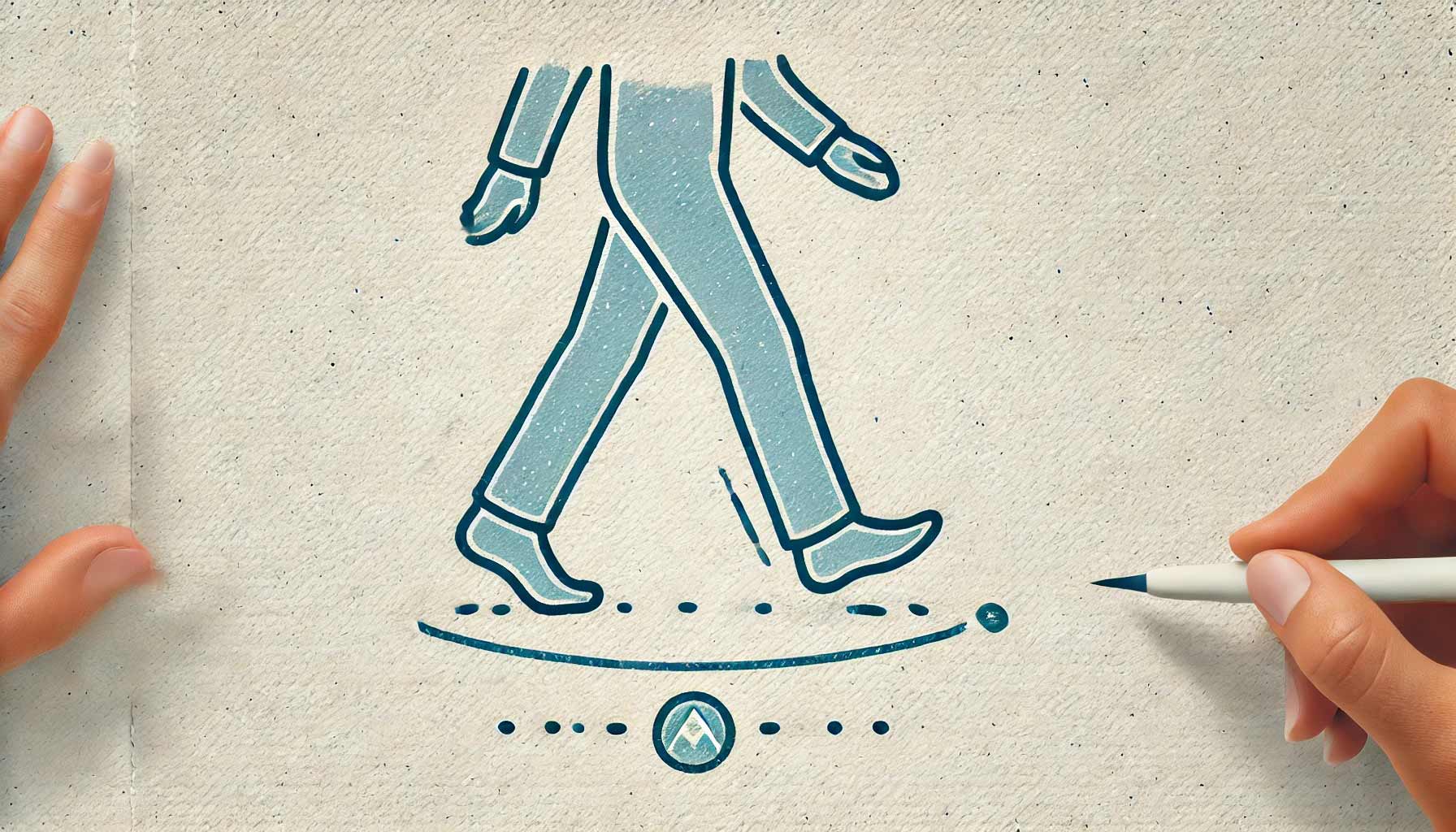
4. Innovations in Real-World Gait Monitoring
One of the most significant breakthroughs in gait analysis is the ability to move beyond controlled lab environments and into real-world settings. This shift is essential because it captures the natural variability in a person’s gait that occurs in different contexts, such as walking on uneven surfaces, climbing stairs, or navigating crowded spaces. These everyday scenarios can significantly impact gait, and monitoring them is crucial for an accurate assessment of fall risk.
From Lab to Life:
- Real-World Relevance: Lab-based gait assessments often fail to account for the complexities of real-life environments, which can mask true fall risks. Wearable sensors bridge this gap by providing continuous monitoring in the person’s usual surroundings.
- 24/7 Data Collection: Wearable sensors collect gait data throughout the day, capturing variations that occur due to fatigue, time of day, or specific activities. This comprehensive data set allows for a more accurate analysis of how gait changes over time and under different conditions.
- Adaptive Monitoring: As gait can vary significantly from one day to the next, especially in older adults or those with chronic conditions, continuous monitoring ensures that all relevant data is captured, including any transient or temporary changes that could indicate an emerging fall risk.
Remote Monitoring Solutions:
- Telehealth Integration: Remote gait monitoring supports telehealth services by providing clinicians with ongoing access to their patients’ gait data. This continuous flow of information enables proactive adjustments to care plans without the need for frequent in-person visits.
- Patient Empowerment: Wearable gait analysis tools empower individuals by involving them directly in their fall prevention strategies. Users receive real-time feedback and can make adjustments to their activities or environment based on data-driven insights.
These innovations in real-world gait monitoring represent a significant advance in fall risk assessment, offering a level of detail and relevance that traditional methods cannot match. By continuously capturing data in natural environments, wearable sensors provide a dynamic and holistic view of an individual’s gait, facilitating more effective fall prevention interventions.
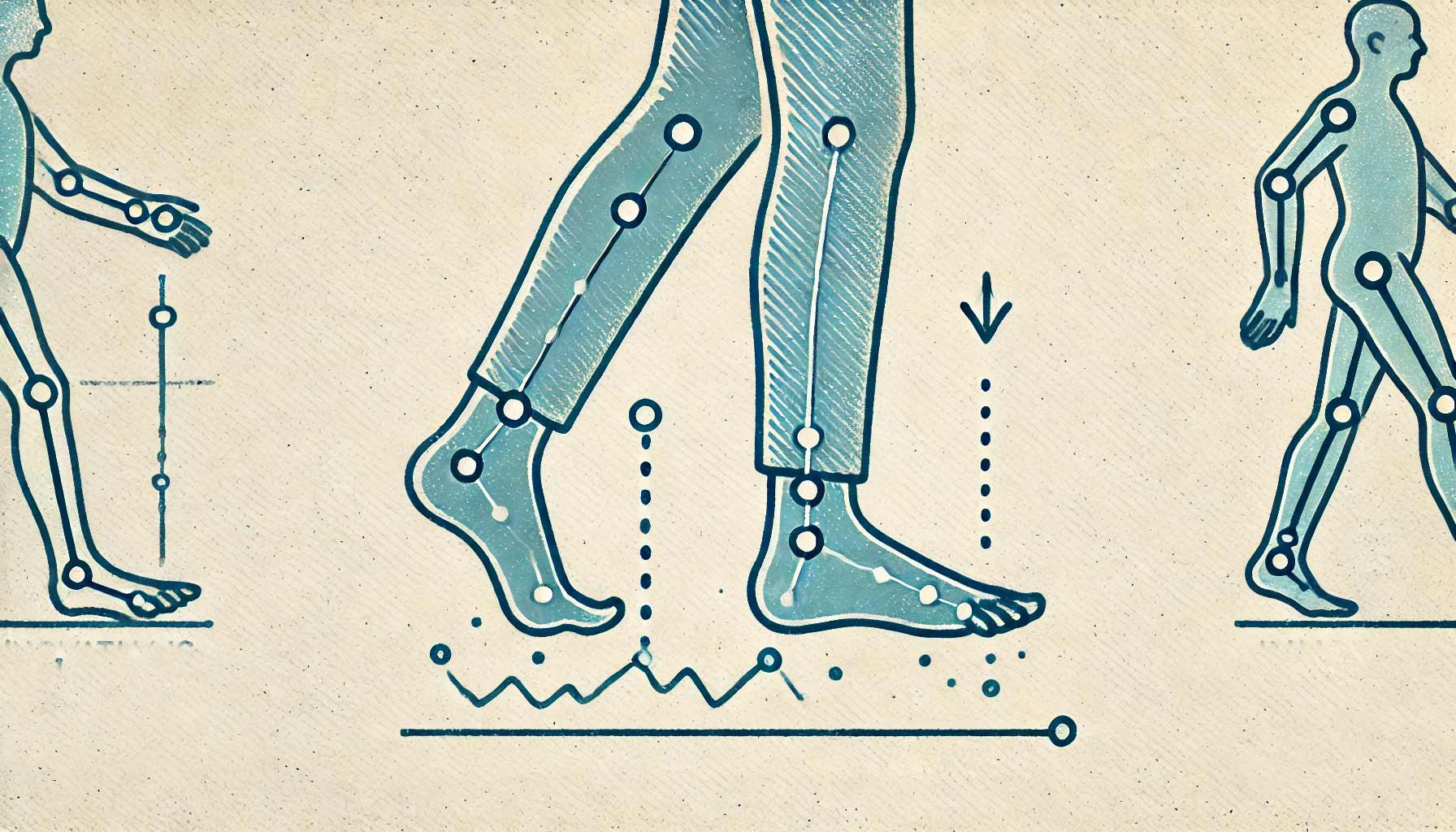
5. Impact of Different Sensor Placements on Gait Analysis
The placement of sensors plays a crucial role in the quality and specificity of gait analysis data. Different locations on the body offer unique perspectives on movement, each with its strengths and limitations. Understanding these differences helps in selecting the optimal sensor placement for accurate fall risk assessment.
Thigh Placement:
- Devices: For example, Fibion SENS and similar devices can be worn on the thigh.
- Impact on Detection: Thigh placement captures detailed lower limb dynamics, such as stride length, stance, and swing phases. This location is ideal for analyzing specific gait characteristics directly related to fall risk, such as changes in stride symmetry or increased variability in step length.
Center of Mass (Waist/Hip) Placement:
- Devices: For example, Fibion SENS and Fibion Research can also be worn at the hip.
- Impact on Detection: Sensors placed at the body’s center of mass provide a balanced overview of whole-body movement, effectively detecting shifts in balance and overall stability. This placement is well-suited for assessing general movement patterns and identifying broad indicators of fall risk.
Chest Placement:
- Devices: For example, Fibion Vitals is designed for chest placement.
- Impact on Detection: Chest placement allows for the capture of upper body movements, respiration, and heart rate, which are useful for detecting falls involving sudden upper body tilts or losses of balance. However, it may be less effective at detecting specific lower limb movements critical to fall risk assessment.

Wrist Placement:
- Devices: Commonly used consumer fitness trackers, such as smartwatches.
- Impact on Detection: Wrist-worn devices are convenient and popular for general activity tracking. They capture arm movements and provide insights into overall activity levels, but they may not accurately reflect whole-body stability or specific gait dynamics. As a result, wrist placement is generally less effective for detailed fall risk assessment but can serve as a supplementary tool.
Choosing the Right Placement:
- Purpose-Driven Selection: The ideal sensor placement depends on the specific goals of the gait analysis. For detailed assessment of leg dynamics and stride, thigh placement is typically most informative. For broader balance monitoring, the hip or chest may be appropriate, while wrist-worn devices are best used for general activity tracking.
By strategically selecting sensor placement based on the analysis needs, wearable technology can provide highly accurate and actionable data, enhancing the effectiveness of fall risk assessments and interventions.
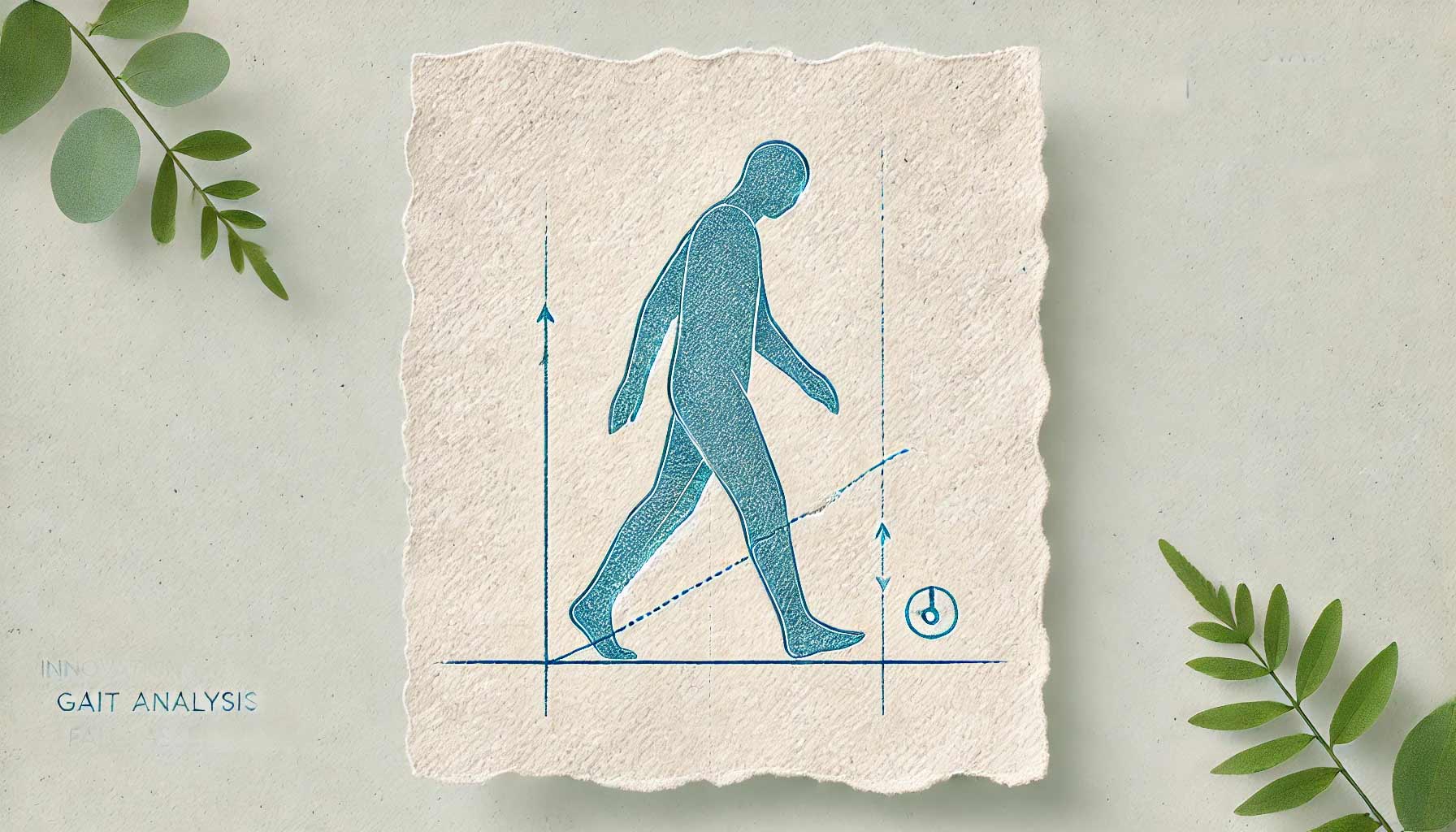
6. Applications of Gait Analysis Data
The data obtained from gait analysis goes beyond mere observation; it provides actionable insights that can be used to develop personalized interventions, inform clinical decisions, and enhance public health initiatives aimed at fall prevention.
Personalized Interventions:
- Customized Exercise Programs: Detailed gait analysis allows healthcare providers to tailor exercise regimens specifically designed to improve the balance, strength, and mobility of individuals at risk of falling. For example, if gait analysis shows a tendency toward shuffling steps, targeted leg strengthening and balance exercises can be recommended.
- Assistive Device Recommendations: Data-driven insights can help clinicians determine the appropriate type of assistive devices, such as canes or walkers, based on specific gait deficiencies. This tailored approach ensures that the assistive devices directly address the unique mobility challenges of the individual.
- Behavioral Modifications: Gait data can also guide lifestyle changes, such as recommending safer footwear, home modifications to reduce tripping hazards, or adjustments in daily routines to avoid high-risk activities during periods of increased fall risk.
Clinical Decision Support:
- Ongoing Monitoring of Treatment Efficacy: Clinicians can use gait data to monitor how well a patient is responding to a specific treatment plan, such as physical therapy or medication adjustments. Changes in gait parameters can indicate whether the treatment is effective or if modifications are needed.
- Risk Stratification: Gait analysis helps in stratifying patients based on their risk levels, allowing healthcare providers to prioritize interventions for those at the highest risk of falling. This targeted approach maximizes the efficient use of resources and enhances patient outcomes.
- Predicting Health Decline: Changes in gait patterns can serve as early indicators of broader health issues, such as cognitive decline or the onset of chronic conditions like arthritis or Parkinson’s disease. This early warning system enables timely interventions that go beyond fall prevention.
Population-Level Insights:
- Public Health Strategies: Aggregated gait data can provide valuable insights into the prevalence of fall risks within specific populations, such as older adults in community settings or patients in rehabilitation centers. These insights can inform public health strategies aimed at reducing falls through community-based interventions, education, and resource allocation.
- Research and Development: Gait data contributes to the ongoing research and development of new technologies and interventions aimed at fall prevention. By understanding common gait abnormalities across populations, researchers can innovate solutions that address the most prevalent risks.
These applications underscore the versatility and impact of gait analysis data in fall prevention, providing a powerful tool for clinicians, caregivers, and public health officials alike.
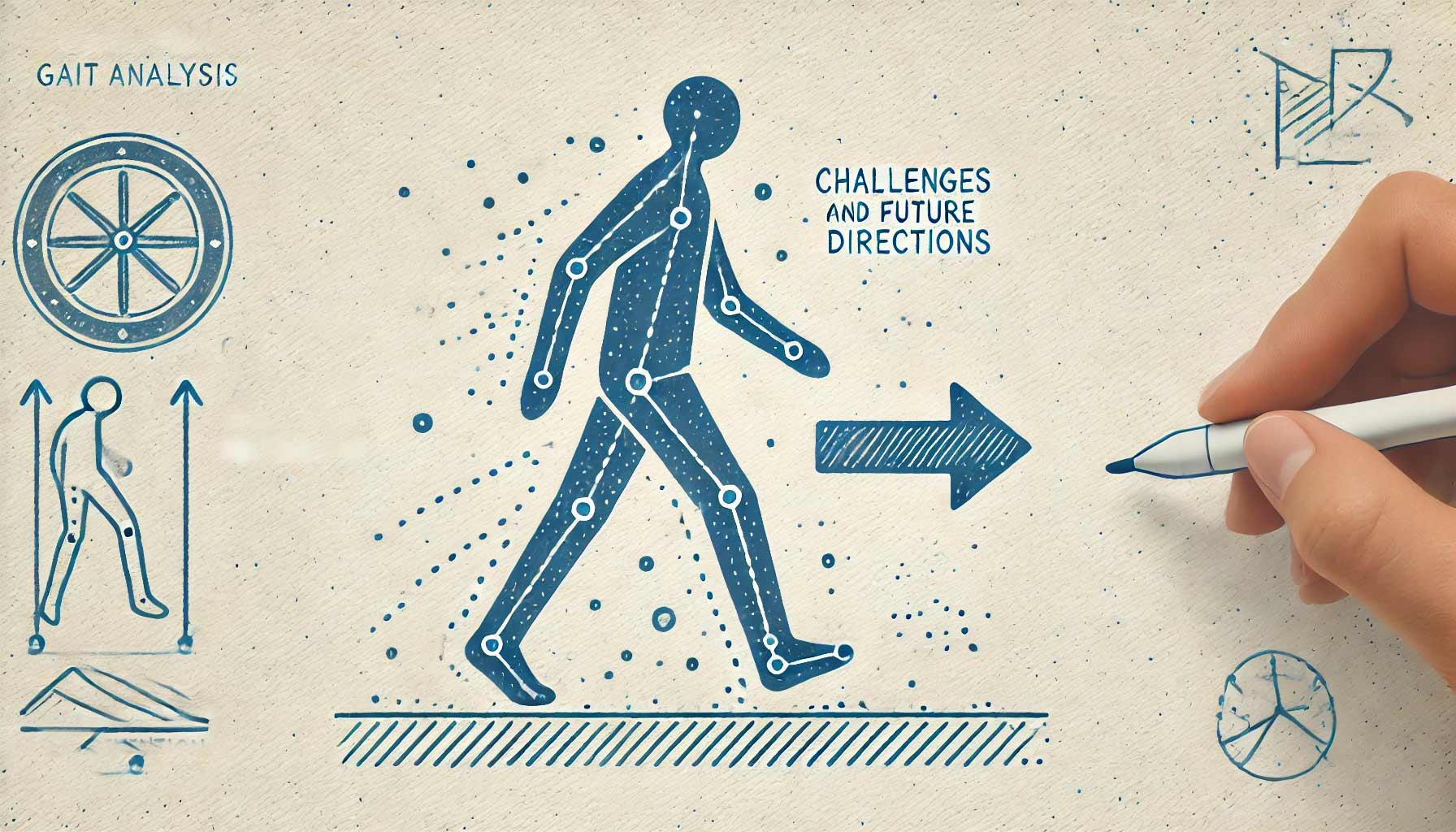
7. Challenges and Future Directions in Gait Analysis for Fall Prevention
Despite the promising advancements in gait analysis for fall prevention, several challenges remain that need to be addressed to maximize the potential of this technology. Additionally, the field continues to evolve, with exciting future directions on the horizon.
Challenges:
- Data Privacy Concerns: With the collection of continuous and personal health data, ensuring the privacy and security of information is a critical concern. Strict data protection measures and compliance with regulations such as GDPR or HIPAA are essential to maintain user trust.
- Accuracy and Validation: While wearable sensors and AI algorithms are highly advanced, ensuring the accuracy and consistency of gait analysis across different settings and populations remains a challenge. Continuous validation and refinement of algorithms are necessary to reduce false positives and negatives in fall risk detection.
- Adoption Barriers: Many elderly individuals may be resistant to adopting new technologies due to unfamiliarity, concerns about usability, or cost. Simplified user interfaces, comprehensive training, and efforts to make these devices more affordable can help overcome these barriers.
Future Innovations:
- Enhanced AI Models: Future advancements in AI could lead to even more precise and predictive models, capable of identifying fall risks with greater sensitivity and specificity. These models may also incorporate additional data sources, such as environmental factors or user feedback, to refine predictions.
- Integration with Smart Home Systems: The integration of wearable gait analysis with smart home technology presents an exciting opportunity to create a comprehensive fall prevention ecosystem. For example, gait data could trigger automatic adjustments in home lighting, alert systems, or even robotic assistance to prevent falls in high-risk situations.
- Personalization and Adaptability: As AI and machine learning algorithms become more sophisticated, they will be able to adapt dynamically to the user’s evolving needs. This adaptability will allow for the personalization of fall prevention strategies in real-time, ensuring that interventions remain relevant as the user’s condition changes.
The future of gait analysis for fall prevention is bright, with ongoing research and technological advancements poised to make these tools even more effective and accessible. By addressing current challenges and embracing new innovations, the potential for wearable technology to significantly reduce falls and improve the quality of life for at-risk populations will continue to grow.
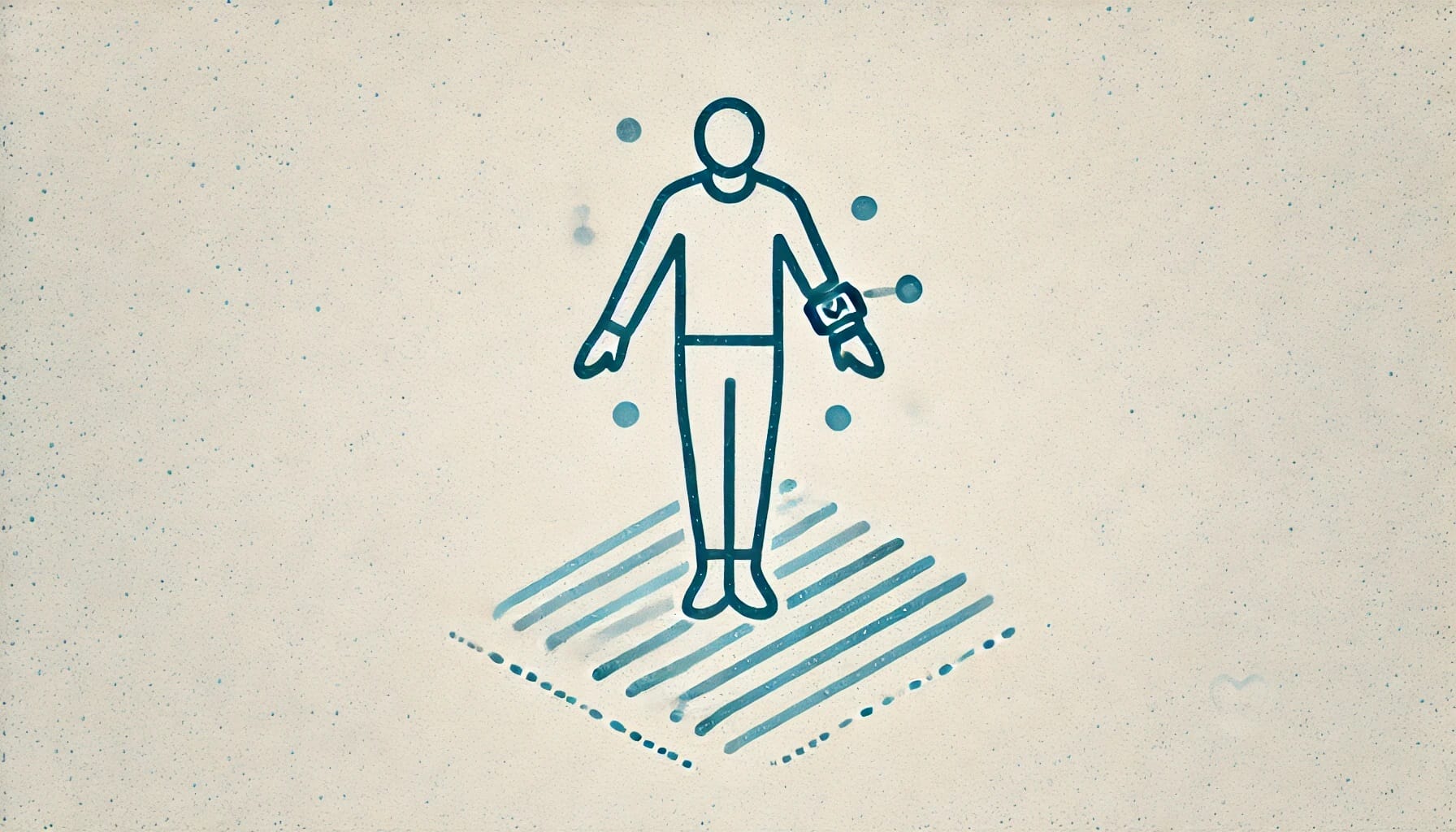
Conclusion
Gait analysis has emerged as a critical component of fall risk assessment, and recent innovations in wearable technology and AI are revolutionizing how this analysis is conducted. From continuous real-world monitoring to predictive AI models, these advancements provide clinicians, caregivers, and individuals with the tools they need to proactively address fall risks. By leveraging these cutting-edge technologies, we can make significant strides in preventing falls, enhancing mobility, and improving overall safety for elderly populations.
Introducing Fibion SENS: An Easy Solution for Gait Analysis in Daily Life
For those seeking a versatile and user-friendly tool for gait analysis, Fibion SENS offers an excellent solution. Designed to monitor acceleration long-term, Fibion SENS can be easily integrated into daily life to provide continuous gait analysis with minimal disruption.
- Long-Term Monitoring: Fibion SENS is equipped for extended use, capturing detailed movement data over long periods to identify trends and deviations in gait that could signal fall risk.
- Flexible Placement: Whether worn on the thigh, hip, or other suitable locations, Fibion SENS adapts to the needs of each user, providing accurate and relevant data for personalized fall prevention strategies.
- Real-World Application: Unlike traditional lab-based assessments, Fibion SENS excels in real-world settings, offering valuable insights into how gait varies throughout daily activities.
By incorporating Fibion SENS into your fall prevention approach, you can leverage advanced technology to gain a deeper understanding of gait dynamics and proactively address fall risks in the most effective way possible.
Call to Action
📅 If you want to learn more about Fibion’s SENS, do not hesitate to book a video call with our expert Dr. Miriam Cabrita.

🔍 Order Fibion SENS Motion 3 Devices Test Package to get first-hand experience of the system. Order now for hands-on experience and comprehensive insights.
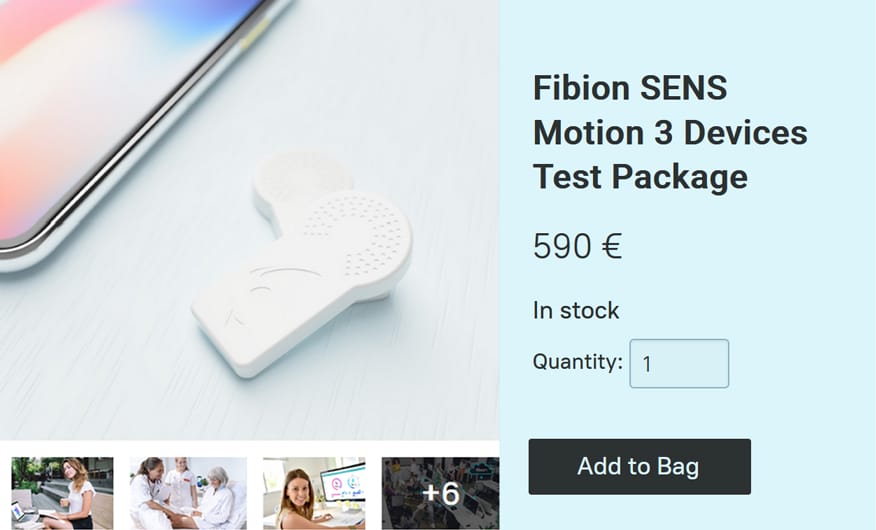
🔍 You may also discover other valid and reliable products in our portfolio, such as the Fibion Research, Fibion Vitals, Fibion Sleep, Fibion Emfit, and Fibion Circadian, all designed to assist in research measuring physical activity, sedentary behavior, and sleep.
Frequently asked questions about this topic:
What is gait analysis and why is it important for fall prevention? +
Gait analysis examines walking patterns to identify abnormalities that increase fall risk. It’s crucial for fall prevention as it helps in early detection of mobility issues.
How do wearable sensors improve gait analysis for fall risk assessment? +
Wearable sensors provide continuous monitoring of gait in real-world settings, capturing data that reveals fall risks more accurately than lab-based assessments.
What role does AI play in enhancing gait analysis for fall prevention? +
AI processes large volumes of gait data to detect patterns and predict fall risks. It provides personalized feedback and real-time alerts for timely interventions.
Which sensor placements are most effective for gait analysis? +
Thigh placements capture detailed lower limb dynamics, while hip placements monitor overall balance. Chest placements are good for upper body movements, and wrist placements are less effective for detailed gait analysis.
What are the benefits of real-world gait monitoring for fall risk assessment? +
Real-world gait monitoring captures natural variability in walking patterns, providing a more accurate assessment of fall risk across different daily activities and environments.
What challenges exist in implementing gait analysis for fall prevention? +
Challenges include data privacy, ensuring accuracy, and encouraging adoption among elderly users. Continuous validation of AI models and affordable, user-friendly devices can help address these issues.










